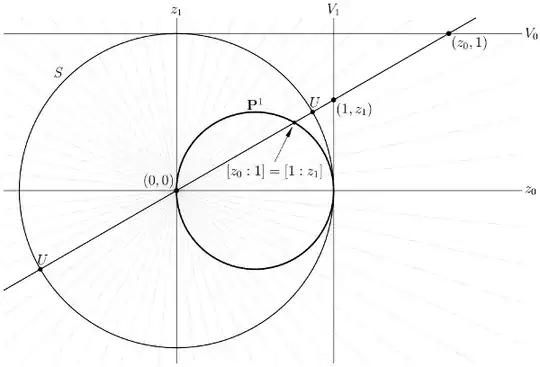I am going through Nakahara's "Geometry, topology and physics" by myself and I got stuck on a calculation.
I have the total space $$L=\{(p,v)\in\mathbb{C}P^n\times\mathbb{C}^{n+1}|v=ap,a\in\mathbb{C} \} $$ and the projection map $\pi:L\rightarrow\mathbb{C}P^n$ as $\pi(p,v)=p.$
So far I have that the fibre is then $\mathbb{C}^{n+1}$ over $\mathbb{C}P^n$ and that the trivialization is the map $\phi_i^{-1}:\pi(p,v)\rightarrow U_k\times\mathbb{C}^{n+1}$ where $\{U_k\}$ is a n open cover of $\mathbb{C}P^n\simeq\mathbb{C}$ with coordinates $(z_0/z_1,z_1/z_2\dots z_n/z_0)$.
So I thought that the trivialization is then $\phi_i(v)=(p,\frac{z_k}{|z_{k+1}|})$ and the transition function is $t_{ij}=\frac{z_k|z_{j+1}|}{|z_{k+1}|z_j} $.
the group structure is $G\supset \{t_{kj}\}$.
I am a bit out of my depth here so any help is greatly appreciated.
